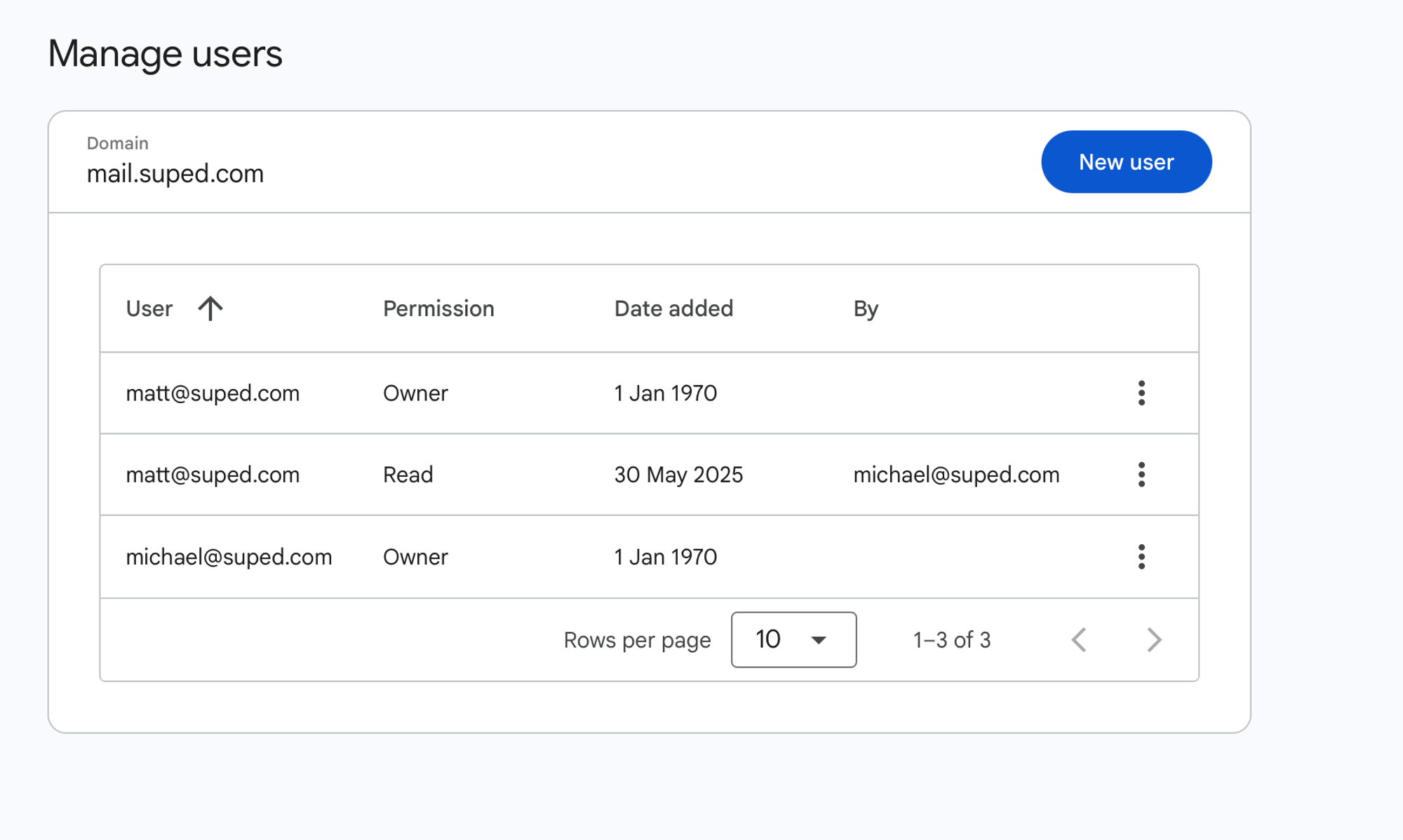For anyone serious about email deliverability, Google Postmaster Tools (GPT) is an indispensable, non-negotiable part of the toolkit. It provides direct, data-backed insights into how Google’s massive infrastructure sees your sending domain. For years, we’ve relied on it to monitor spam rates, domain reputation, and authentication issues. So, when whispers of a new version, a "v2," started circulating, my ears perked up.
Well, the first piece of that new version has officially landed. Google has rolled out a new
Manage Domains page, and it's a significant glimpse into the future of the platform.
It represents a much-needed user interface refresh and a foundational step toward a more robust and scalable tool for senders who manage more than just a handful of domains.
First Impressions: A Welcome, Albeit Slow, Update

Jumping into the new interface, the first thing you notice is the clean, modern layout. It’s a dedicated page that lists all the domains you have verified and have access to. This is a huge improvement over the old dropdown menu, which could become unwieldy if you manage dozens of domains.
I’ll be honest, my initial experience was a bit sluggish. With access to around 50 domains, it took nearly a minute for the page to load fully. I also found a minor bug where scrolling back up the page breaks after you expand the list to show more domains.
But let’s be fair, these are likely just early launch jitters. The important thing is that this is progress. It’s a clear signal that Google is actively investing in improving the platform’s usability, especially for power users like marketing agencies, email service providers, and large enterprises. Having a centralized, searchable, and filterable view of all your domains is a quality-of-life improvement that was long overdue.
There's also an overhauled UI to manage user permissions for your Postmaster tools domains as well (see image below). However seems like a bunch of the dates are... interesting.

Why a Simple Domain Manager Matters
On the surface, a page to manage domains might not sound like a groundbreaking feature. But it’s the foundation upon which everything else will be built. A scalable management interface is the necessary first step before migrating the more complex data dashboards, like IP and Domain Reputation.
This update also doesn't happen in a vacuum. It aligns perfectly with Google's broader push for a more secure and trusted email ecosystem. This push was most visible with the
new sender requirements that Google and Yahoo rolled out in early 2024, mandating strong authentication via SPF, DKIM, and DMARC for bulk senders.
By providing better tools, Google is empowering senders to more easily monitor their compliance and reputation. A clearer interface for managing domains is part of that. It helps ensure that senders can easily add and verify all their domains, which is the first step to monitoring their DMARC compliance and overall deliverability health. Getting this right is no longer optional; it's essential for anyone who wants their email to land in the inbox. If you're still getting up to speed on these changes, our guide on
Google and Yahoo's new email requirements can help fill in the gaps.
The Wishlist: What We Hope to See Next
This is a great first step, but the most exciting parts of Postmaster Tools v2 are still to come. The core functionality—the data dashboards for Spam Rate, IP Reputation, Domain Reputation, Authentication, and more—still lives in the old interface for now. The real test will be how Google migrates and hopefully improves these critical reports.
But the number one feature on my, and likely every other email professional's, wishlist is an API.
An official Google Postmaster Tools V2 API would be a complete game-changer. It would unlock the ability to:
- Automate Monitoring: Instead of manually logging in to check your domain reputation, an API would allow tools to pull this data automatically and alert you to problems in real time.
- Integrate Data: We could pull GPT data directly into our own internal dashboards or third-party platforms. Imagine combining your Google reputation data with your DMARC reports and your email campaign engagement metrics in one place. This would provide a truly holistic view of your email program's health.
- Track Trends Over Time: An API makes it much easier to store historical data, allowing you to track your reputation over months or years and correlate changes with specific campaigns or infrastructure updates.
The potential is massive. It would move Postmaster Tools from a reactive, check-up tool to a proactive, integrated monitoring system.
A Promising Sign of Things to Come
The launch of the "Manage Domains" page is more than just a minor UI tweak. It's a clear and promising signal of Google's continued commitment to the email sender community. While it has a few rough edges, it lays the necessary groundwork for a more powerful and user-friendly Postmaster Tools.
For now, we’ll celebrate the progress. It’s a welcome improvement that simplifies domain management. But we’ll also be watching eagerly for the next updates, hoping that the migration of reputation dashboards and the introduction of a public API are next on the roadmap. The future of email deliverability is data-driven, and a fully-featured Postmaster Tools v2 will be central to that future.





